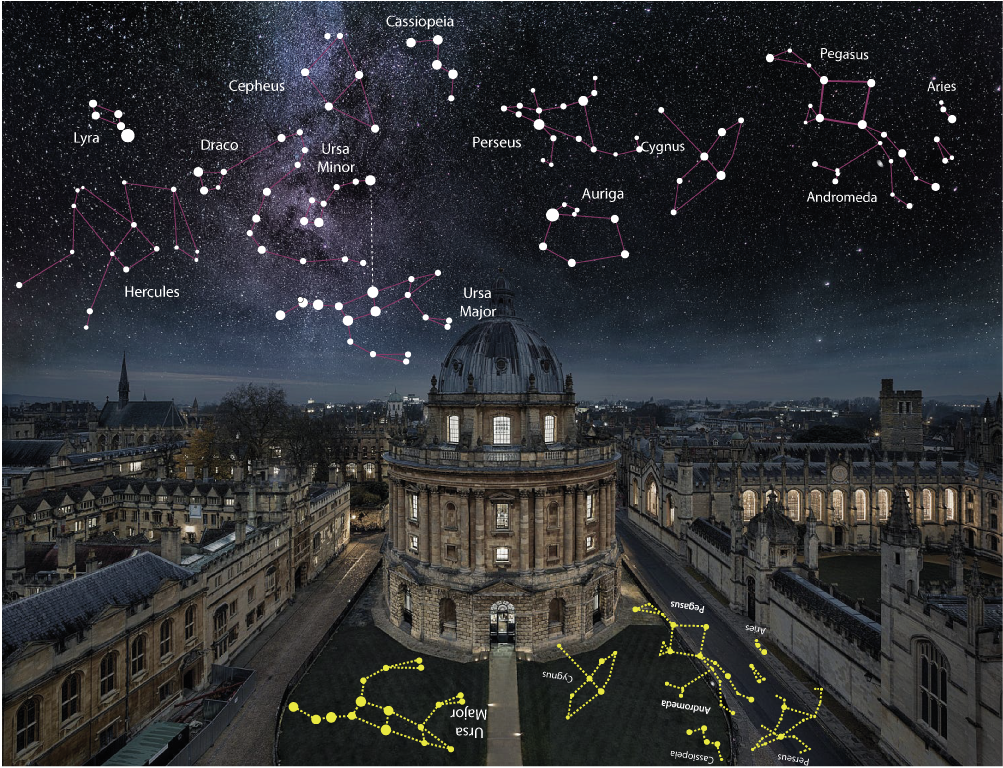In my first article, I talked about the motivations for work like Star Light, Star Bright. I think it’s very important to honestly explore the complexities of creating citywide, interactive public installation work and the always-returning question: “Why it is so worthwhile?” So here are five key learnings that I would like to share.
Working across Cities and with multiple stakeholders
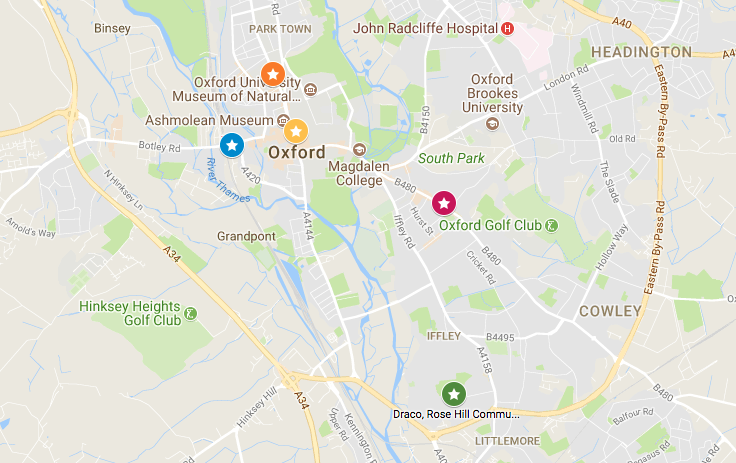
Oxford has been a great city to work with. We have been met with nothing but openness, willingness and a real urge by all the authorities to make great things happen in the city, which is exemplified by the number of partners who came together to fund the Smart Oxford Playable City Commission. Work like this in public space just isn’t possible without such a willingness to create. But cities are not straightforward.
85% of Oxford is owned by the individual university colleges. We are working with both the County (Conservative) and City (Labour) councils who have shared but different responsibilities for infrastructure across Wider Oxfordshire. County Council looks after Highway, and City looks after street lighting. But in some areas of the city the pavements are entirely owned by different colleges. Huge swathes of the city area are ‘sacrificed’ each year to flooding (anything labelled on a map as a meadow is definitely not suitable for a winter art installation!). The public perception of Oxford: of rich colleges, and perfect quads isn’t the full picture either. We worked really closely with the County and City Councils to try and identify communities and groups they wanted to reach, sites which would be accessible for power, and which would have relatively low light levels. We wanted a mix of iconic buildings, academic locations, commuter hotspots and spaces for locals. I’m really pleased with the locations we reached including constellations at Rose Hill Community Centre (Draco), and Manzil Way Gardens (Cassiopeia) which are two of the most deprived areas in Oxfordshire.
The Social Media Narrative
When I had initially conceived this project I saw it creating huge amounts of interest online, great images and social media content as people played. I was anticipating lots of images like these
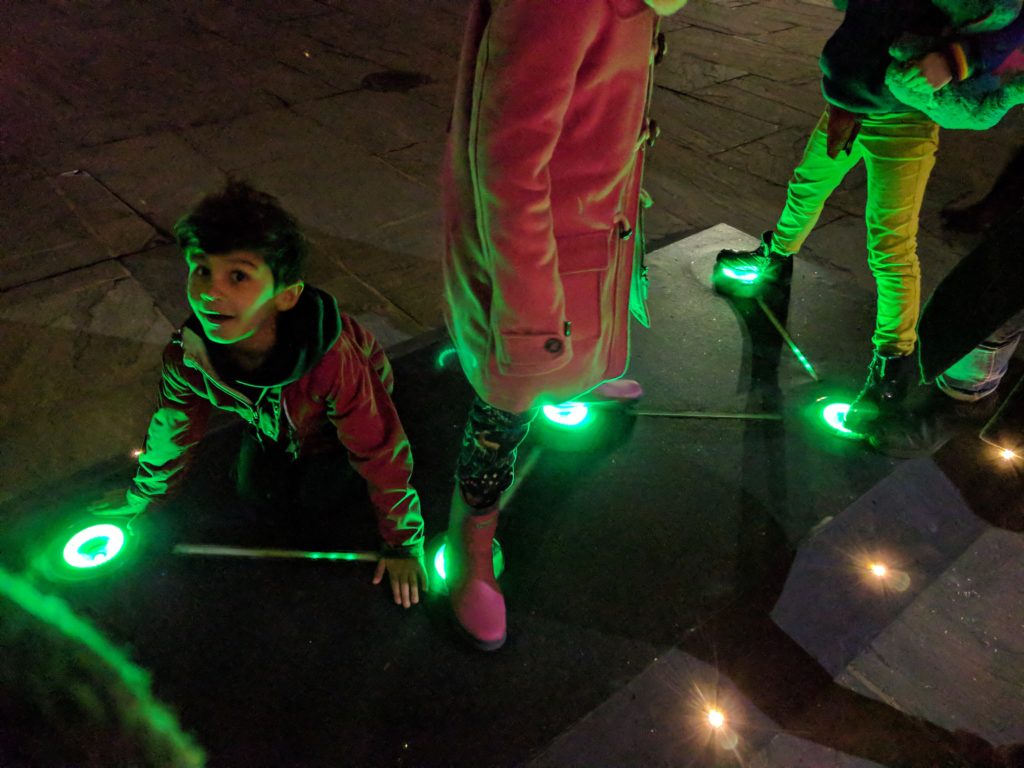
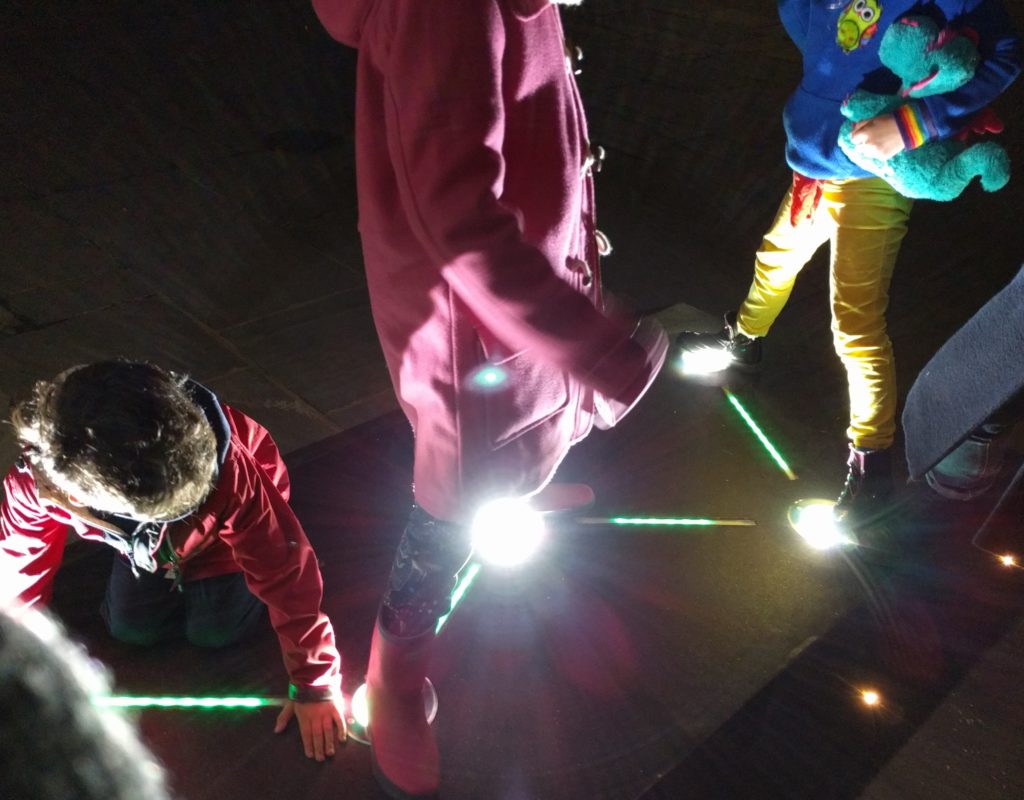
I’ve successfully created projects which have gone viral before, reaching 4 million people online, but this project has transpired to offer more of a personal experience, one where people play together but don’t necessarily have other people observing. We have, however, found that our additional material and content exploring each of the constellations to have been very powerful, reaching 40,000 people on twitter last week, alone.
The best test audience is the public
One of the biggest concerns from the commissioners was whether the Installations were going to be stolen. One of the public table tennis tables ‘walked’ only last week. So we made sure the installations were strong, hard, robust and heavy: very heavy. It turns out we made them strong enough for:
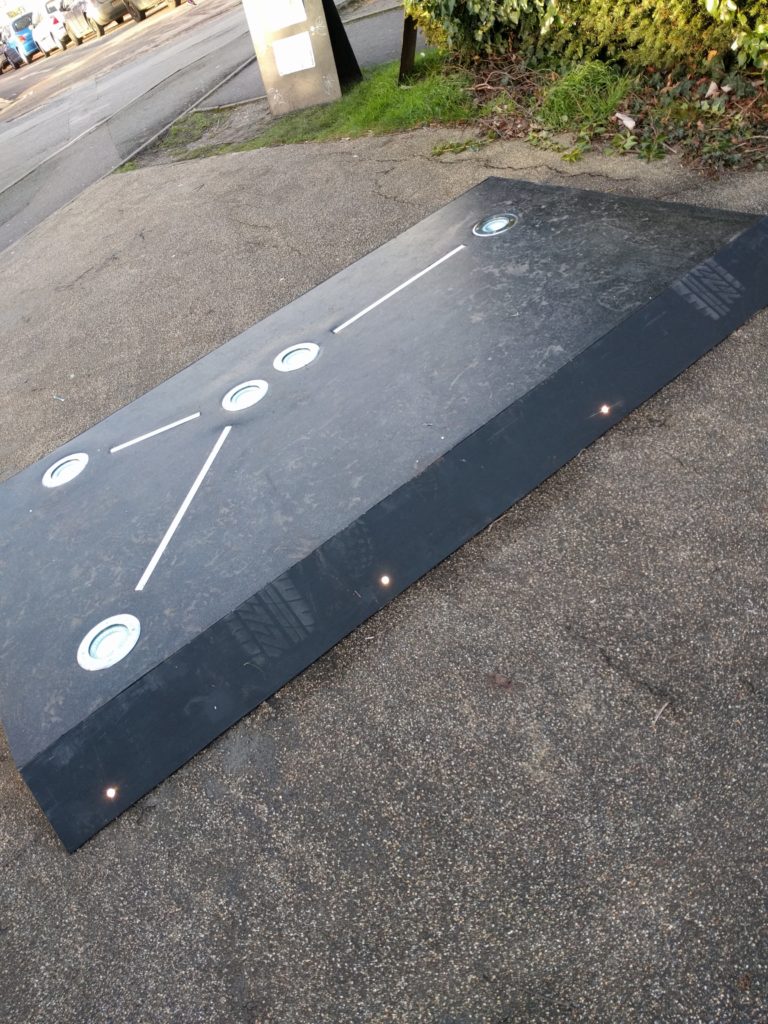
Checking on Cancer
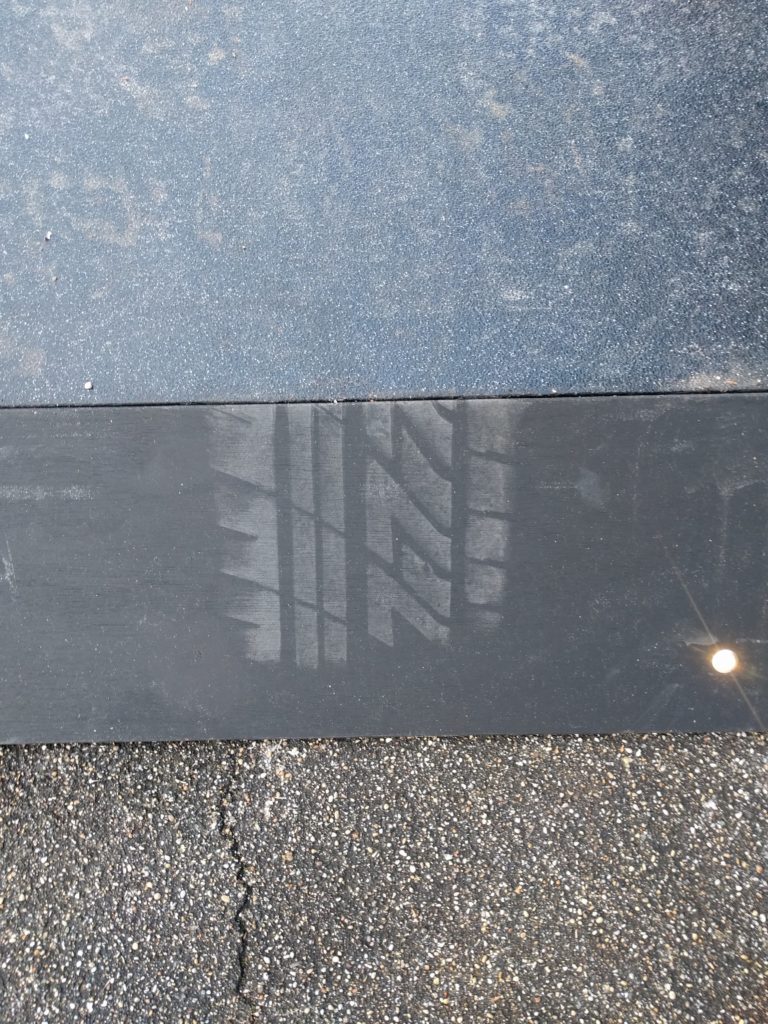
A closer look
A car to run over. And that they, on occasion, made the best bike stand.
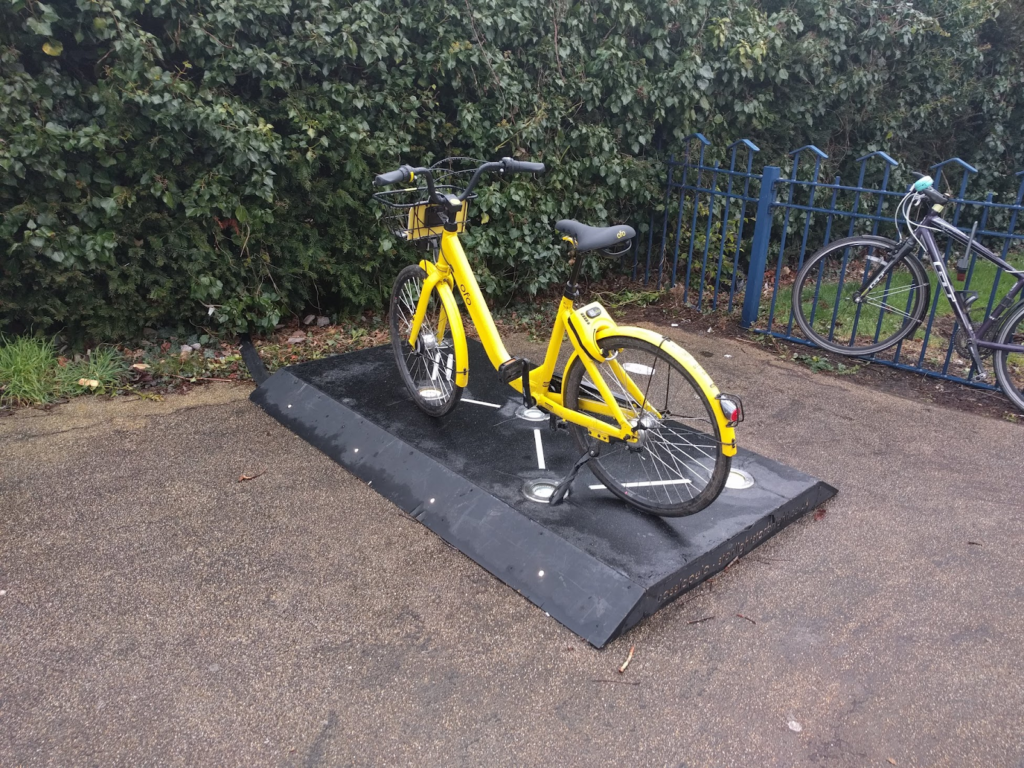
The best bike stand
But not a single installation has been stolen, damaged or graffitied: When the public value an installation then destruction is not their first thought.
Paris Flooded
January 2018 saw the worst flooding in Paris in 100 years. That same weather system hit Oxford around the same time which, when combined with plummeting temperatures overnight, really pushed our industrial waterproof materials to the limit.
The Power of Draco
When we went to install Draco, at Rose Hill Community Centre my team and I were met by a proper ‘gang of youths’, kids shooting around on BMXs, mouthing off, talking about ‘shanking’ each other, ‘friends with benefits’, and who could whip who the hardest. Listening into the conversations as they ran and play-fighted their way around us, I realised these kids were actually really young, anything from 8 to 13 years old.
But then, the project worked its magic.
“What’s that?’
“It’s a star constellation called Draco”
“What’s a constellation?”
“It’s the shapes the stars make in the sky, that you can sometimes see at night.” The kids looked up… nothing visible.
“Oh wait, like the saucepan? I can see the saucepan over my house each night.”
“Yep, just like the saucepan. That’s part of another constellation, that’s called Ursa Major.”
And just like that, these kids started helping us install the piece, nicknaming the stars, getting it to work.
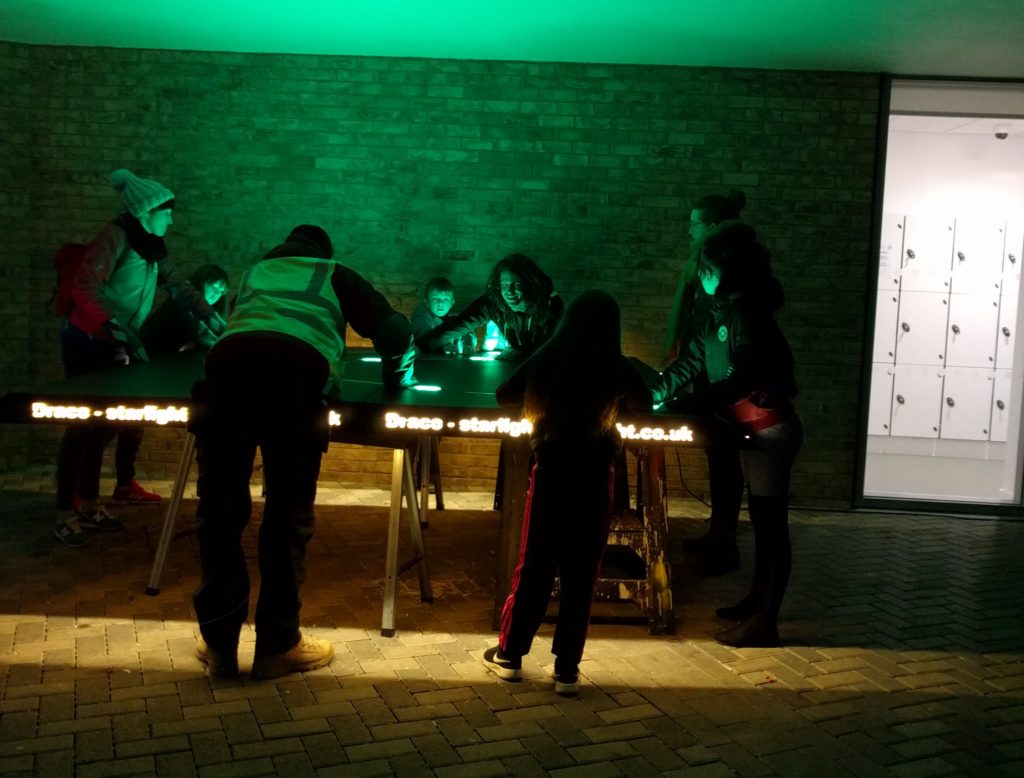
They invented new games, from precision parkour to dance games, activating Draco’s stars with BMX jumps and wheelies. They were filming us and live streaming themselves. They were asking us to explain in detail how it was built so they could go and build one themselves.
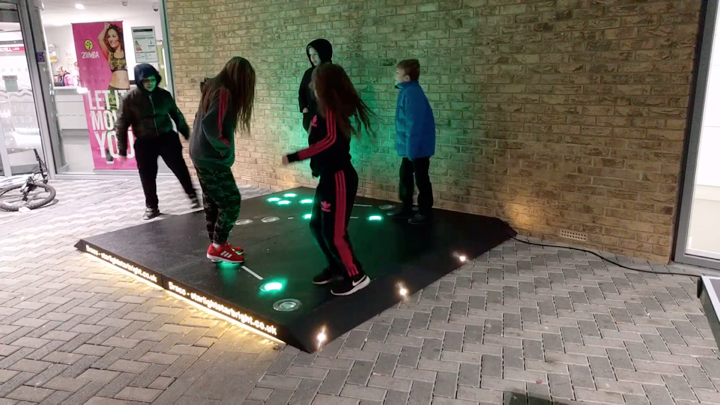
And their engagement hasn’t stopped: We turned up to do some routine maintenance and one of those tough kids came barrelling up to me.
“You’re not taking it away are you? … ‘coz it’s baaaad”.
That was a definite compliment.
Anecdotes like this are always only half the picture, but they are definitely what I love most about making interactive, public-facing work. Star Light, Star Bright was designed to run simultaneously for 6 weeks, in at least 5 locations across the city. We can’t be in all these locations all the time so we built a system that allowed us to monitor the constellations remotely. At a glance, we could see the engagement and usage of each constellation by looking at the number of stars being triggered. And if enough people interacted with the constellation, this triggered a special lighting state with all the stars lit up.
We were able to identify from our logs when people began to engage with a constellation, and how long they played for, how many stars were triggered and if enough people were working together to activate the ‘special win state’.
Draco and the kids at the Rose Hill Community Centre have really stood out, day after day. As soon as school is over, numbers spike on our log, revealing an increase of engagement with the constellation. A constellation that hasn’t been graffitied, vandalised or destroyed, but played with day in and day out:
And I feel this graph says it all:
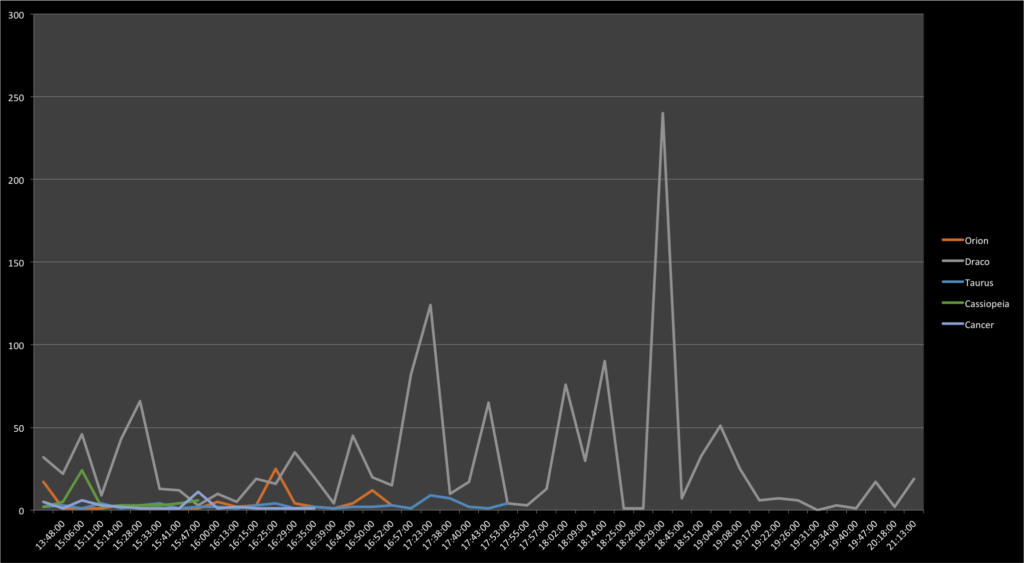
Constellation Interaction, Thursday 8 February
This data is from Thursday 8 February. Look at 3.10pm onwards and the engagement with Draco, which is the grey line. Time is along the bottom, and the number of stars triggered in an engagement session up the left-hand side.
So if I take anything away from this project, it’s that when you create large-scale, public-facing interactive installations, the sites that work the best are never the ones you predict. Here’s to more sites like Rose Hill Community Centre and constellations like Draco as we tour the project around the world.
Star Light Star Bright, winner of the Smart Oxford Playable City Commission, is across Oxford until 28 February 2018. Find constellation locations & more information on starlightstarbright.co.uk
